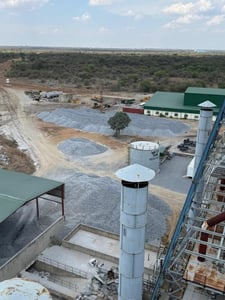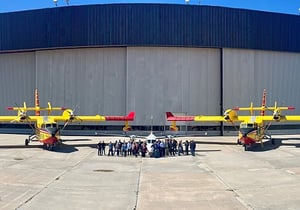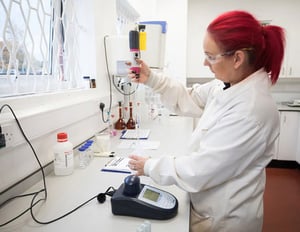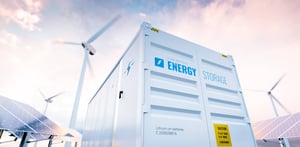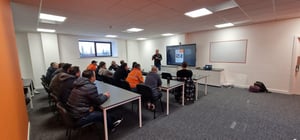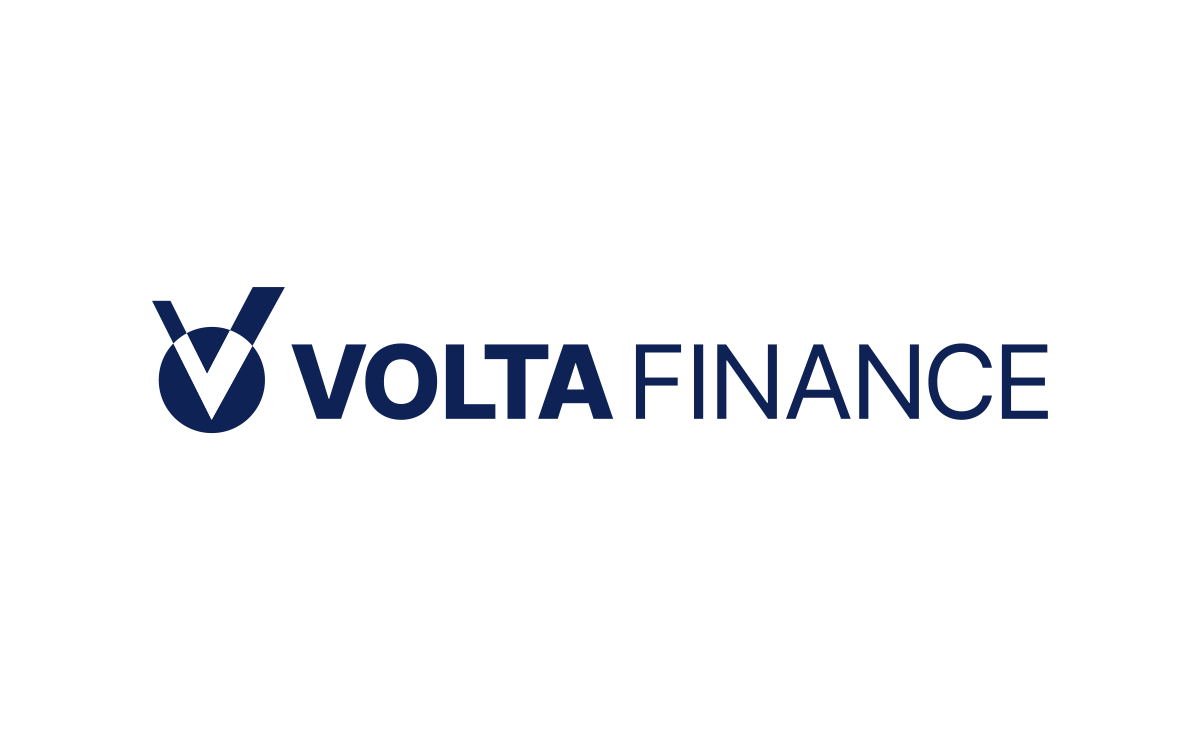Rio Tinto plc (LON:RIO) has released its third quarter production results.
Q3 Operational update
• Our All Injury Frequency Rate (AIFR) of 0.35 has improved through 2020 versus 2019 (0.42). We have successfully adapted our assets and offices to the new operating conditions associated with COVID-19 and we continue to closely manage this risk to protect our people and communities.
• Pilbara operations are returning to more normal operating conditions with rosters back to pre-COVID-19 settings although controls to protect our employees, contractors and communities remain in place. Total material moved was a record for the quarter with Pilbara iron ore production of 86.4 million tonnes (100% basis), 1% lower than the third quarter of 2019. A recovery in planned maintenance activity in the port led to 5% lower shipments.
• Bauxite production of 14.5 million tonnes, 5% higher than the third quarter of 2019, with increased year on year production across all sites, including record quarterly production at the non-managed CBG joint venture in Guinea.
• Aluminium production of 0.8 million tonnes in the third quarter was 1% higher than the third quarter of 2019 with stable operations across our smelter portfolio.
• Third quarter mined copper was 18% lower than the same period of 2019 due to lower grade at Kennecott as a result of pit sequencing to accommodate the extended smelter shutdown. Refined copper was 57% lower, primarily due to delays in restarting the Kennecott smelter.
• On 19 August, we announced an update to our refined copper guidance following delays to the restart of the smelter at Kennecott due to unexpected issues following planned maintenance. The safe start-up of the smelter has commenced and consistent with the announcement, we expect that it will be fully operational during October. 2020 guidance for refined copper remains at 135 to 175 thousand tonnes.
• On 28 August, we noted Turquoise Hill Resources’ (TRQ) publication of its ‘2020 Oyu Tolgoi Technical Report’ (2020 OTTR) in relation to the Oyu Tolgoi (OT) project in Mongolia. All estimates are subject to potential changes once the definitive estimate is complete, which is still expected later in 2020. Preliminary indications from the definitive estimate process are that first sustainable production is trending towards the earlier months of the October 2022 to June 2023 range. The estimated development capital cost remains within the range of $6.6 to $7.1 billion, and has now been updated to include known impacts of the COVID-19 pandemic. Further information can be found in the Investments, growth and development projects section below.
• On 10 September, we announced we had entered a Memorandum of Understanding (MOU) with TRQ, that provides a pathway to progress the financing for completion of the Oyu Tolgoi Underground Project in Mongolia and address TRQ’s funding position.
• Titanium dioxide slag production of 293 thousand tonnes was 9% lower than the third quarter of 2019 due to COVID-19 restrictions in Quebec and South Africa and lower market demand.
• Production of pellets and concentrate at Iron Ore Company of Canada (IOC) was 21% lower than the same period of 2019 due to an annual maintenance shutdown deferred from June to September as a result of COVID-19 travel restrictions. A weather related power failure and mechanical issues also impacted production in the third quarter.
| Cultural heritage We have taken a number of actions to strengthen cultural heritage governance and controls, and commenced the longer term process of regaining the trust of Traditional Owners. On 13 October we wrote a letter to Traditional Owners in the Pilbara detailing that we will review all heritage disturbance in consultation with them; and shared our intention to modernise our agreements which includes modifying clauses to ensure respect, transparency and mutual benefit. Specifically, our high level principles include: • Reassessing all activities which have the potential to impact heritage sites, with an immediate focus on those sites that could be impacted over the next 18 to 24 months. • Not enforcing any clauses that restrict Traditional Owners from raising concerns about cultural heritage matters with anyone, or any clauses that restrict Traditional Owners from applying for statutory protection of any cultural heritage sites. • Introducing mechanisms into our agreements to respond better to new information that may emerge about cultural heritage sites, including those affected by section 18 approvals. We will seek to agree an appropriate mechanism in our revised agreements so that there is a clear path for resolution of any differences of view that may emerge. • Improving transparency of any revised agreement and more impactful realisation of economic and social benefits. Other actions include: • We continue active engagement with the PKKP and have agreed a meeting between the Rio Tinto board and the PKKP before the end of the year. • We have instituted an enhanced level of governance over the impact on sites of heritage significance. All approvals to disturb sites directly or indirectly are being made on a risk-managed basis at Rio Tinto Iron Ore Chief Executive level; referrals of decisions as appropriate will be directed to the recently established Heritage Sub-Committee of the Rio Tinto Executive Committee, and if necessary, to the Board. • We have established the Communities and Social Performance Area of Expertise, which is aligned with the existing Health, Safety, Environment (HSE) function, reporting to Mark Davies, Group Executive Safety, Technical and Projects and a member of the Executive Committee. • We have appointed a Chief Advisor – Indigenous Affairs who has a direct reporting line to the Chief Executive. • We have made a firm commitment to increase employment opportunities for Australian Indigenous Peoples in our business, and a $50 million investment to advance Indigenous leadership in our Australian business. • We continue to contribute to the reform of the Aboriginal Heritage Act 1972 (WA). We support an appeal right in the Western Australian government’s section 18 review process to give a greater voice to Traditional Owners in the decision-making in relation to mining on their land. Documents related to Juukan Gorge and additional information on our approach to communities and heritage can be found on our website: • On 4 August, we published our submission to the Parliamentary Inquiry on Juukan Gorge. • On 24 August, we published a Board review of cultural heritage management, detailing what elements of our systems, decision-making processes and governance failed to work, along with recommendations for change. • On 4 September, we provided additional information related to questions taken on notice following our appearance at the Joint Standing Committee on Northern Australia. On 11 September, we announced changes to our Executive Committee following a period of extensive stakeholder engagement by the Board. By mutual agreement, J-S Jacques will step down from his role as an executive director and Chief Executive, Chris Salisbury will step down as Chief Executive, Iron Ore and Simone Niven will step down as Group Executive, Corporate Relations. |
Our markets
Global economic activity in the third quarter was generally strong, helping to sustain optimism for a widespread recovery in 2021. However, recent high-frequency data suggests that the rate of recovery in growth is slowing in most economies, with pent-up demand dissipating, and the rise of renewed lockdowns threatening recovery.
• Commodity demand in China has been supported by commodity-intensive stimulus measures.
• Chinese iron ore demand is at record levels against a backdrop of recovering seaborne supply that was disrupted earlier in the year. However, with the major producers expected to deliver strong volumes in the fourth quarter, iron ore inventories are expected to grow modestly as China’s steel consumption eases from record highs and scrap consumption increases. Japan, South Korea, Taiwan and Europe continue to show signs of recovery: however, ex-China steel production remains down significantly year on year.
• The automotive sector is continuing to see recovery, supporting some demand for Value-Added aluminium products (VAP), but remains below pre-COVID-19 levels globally.
• Copper prices reached a two year high with strong Chinese consumption supporting cathode imports. COVID-19 related supply disruptions remain ~4% of annual copper supply, in addition to normal industry supply disruptions.
Product stewardship
• Our Kennecott operation in the US was the first producer globally to be awarded the ‘Copper Mark’ and Oyu Tolgoi in Mongolia subsequently qualified. The Copper Mark is the industry’s new independently assessed responsible production programme.
• We have partnered with Anheuser-Busch InBev (AB InBev), the world’s largest brewer, to deliver a new standard of sustainable aluminium cans. Initially focused in North America, the partnership will see AB InBev use our low-carbon aluminium made with renewable hydropower, along with recycled content, to produce a more sustainable beer can.
• At our Boron operation in California, a demonstration plant producing lithium carbonate from a waste stream was commissioned. Optimisation of the plant will continue ahead of potential expansion of the project to support commercial production.
| COVID-19 COVID-19 continues to present additional challenges which are being proactively managed by our dedicated Business Resilience Teams, as our workforce embeds the changes in the way we operate and learns to co-exist with the virus. We have maintained strict protocols globally and we closely monitor the situation, including the potential threat of a second wave. COVID-19 also continues to pose a risk to the communities who host our operations and we are working closely with them to manage these risks. • We continue to support global community COVID-19 preparedness and recovery initiatives including: donation of personal protective equipment (PPE) to local health authorities and social services, providing alternative housing support to vulnerable members of the community, upgrading infrastructure to enable dedicated treatment centres and funding other local response initiatives. • While rosters in our Australian iron ore operations have returned to normal, airport and site screening continues with more than 177,000 COVID-19 checks conducted year to date. • Flexible work arrangements have been made available to employees and their families in areas where schools and day care centres are closed and mitigations have been put in place to protect our vulnerable employee base. • At Oyu Tolgoi, we worked with the Governments of Mongolia and Australia to manage more than 40 returning expatriates in quarantine for over 35 days. The second flight landed in early October with further charters planned. • We are also actively managing the risks to seafarers from restrictions on crew changeovers due to COVID-19 measures in place in various countries. We are working with industry and regulators to ensure a practical response, with a focus on crew welfare. Full details of initiatives taken to date can be found on our website. |
Production guidance
| Rio Tinto share, unless otherwise stated | 2019 Actuals | 2020 Sept YTD | 2020 |
| Pilbara iron ore (shipments, 100% basis) (Mt) | 327 | 242 | 324 to 334 |
| Bauxite (Mt) | 55 | 43 | 55 to 58 |
| Alumina (Mt) | 7.7 | 6.0 | 7.8 to 8.2 |
| Aluminium (Mt) | 3.2 | 2.4 | 3.1 to 3.3 |
| Mined copper (kt) | 577 | 395 | 475 to 520 |
| Refined copper (kt) | 260 | 99 | 135 to 175 |
| Diamonds (M carats) | 17 | 12 | 12 to 14 |
| Titanium dioxide slag (Mt) | 1.2 | 0.8 | ~1.2 |
| IOC iron ore pellets and concentrate (Mt) | 10.5 | 7.7 | 10.5 to 12.0 |
| Boric oxide equivalent (Mt) | 0.5 | 0.4 | ~0.5 |
• Production guidance remains unchanged from the Second Quarter Operations Review, with the exception of refined copper, which was updated on 19 August, and titanium dioxide slag, which is now expected to be around 1.2 million tonnes (previously the low end of 1.2 to 1.4 million tonnes).
• Future potential operational and mine development impacts from the reform of the Aboriginal Heritage Act 1972 (WA) and changes to our Heritage approach remain unknown at this point in time. We are consulting with Traditional Owners and are working through scenarios with a broad range of options available given the flexibility in our Pilbara network.
• We will continue to monitor and adjust production levels and product mix to meet customer requirements in line with our value over volume strategy, government imposed restrictions related to COVID-19 and any other potential COVID-19 related disruptions.
Operating costs
• Pilbara iron ore 2020 unit cost guidance is unchanged at $14 to $15 per tonne, including unplanned one-off COVID-19 costs of $0.50 per tonne with cost continuing in the second half relating to controls such as cleaning and screening. The guidance is based on an Australian dollar exchange rate of $0.67.
• Copper C1 unit cost guidance in 2020 remains unchanged at 120-135 US cents/lb.
Investments, growth and development projects
• Project teams have proactively managed COVID-19 related challenges, and overall project delivery is satisfactory. Uncertainty exists around local situations, border access, movement of people and goods, and our ability to engage with Traditional Owners and local communities. However, based on current expectations, capital expenditure guidance is unchanged at around $6 billion in 2020 and around $7 billion in 2021 and 2022.
• Our focus continues to be on the completion of original planned sustaining expenditure in the fourth quarter to enhance the resilience of our asset base.
• Exploration and evaluation operating expense in the third quarter was $170 million, 4% lower than the third quarter of 2019, and 25% higher than the second quarter of 2020, as activities progressed in some regions following the easing of COVID-19 restrictions.
Pilbara replacement projects
• Supply chain issues continue to be managed and construction continues to progress despite necessary social distancing and travel restrictions. Projects have now transitioned back to original roster patterns as restrictions have eased in Western Australia. Despite these impacts to project productivity, delivery of first ore remains on schedule.
• Construction on the Gudai-Darri1 (formerly known as Koodaideri) project continues with production ramp-up still expected to occur in early 2022. The airstrip runway sealing is now complete and has received its first flight. Rail formation works are on target and track-laying will commence in the fourth quarter of 2020.
• First ore from the Robe River Joint Venture sustaining production projects (West Angelas C, D and Mesa B, C and H at Robe Valley) is still expected in 2021.
• Construction is progressing at Western Turner Syncline Phase 2, with planning underway for the next integration shut at Tom Price. Earthworks and concrete works are progressing well with the project completing the first two primary crusher vault wall concrete pours and first ore from the crusher is still expected in 2021.
Oyu Tolgoi underground project
• Work on the project has continued to progress despite COVID-19 controls and ongoing international travel restrictions.
• Care and maintenance activities continue at shafts 3 and 4; some commissioning activities have advanced in preparation for shaft sinking, including rope installation on shaft 4. Further progress will require the remobilisation of international shaft sinking specialists and preparation is underway to mobilise some of these contractors before the end of 2020.
• Overall, underground lateral development has now reached 45,858 equivalent metres, or around 90% of the required development to support firing of the first drawbell.
• All surface infrastructure required for sustainable production is complete and the team is focused on progressing the critical underground Material Handling System 1 (MHS1) to the stage needed ahead of the first drawbell firing. The balance of project infrastructure to be delivered post completion of MHS1 is not needed for sustainable production, however, it is needed to support the production ramp-up profile.
• Preliminary indications from the definitive estimate process are that first sustainable production is trending towards the earlier months of the October 2022 to June 2023 range. The estimated development capital cost remains within the range of $6.6 to $7.1 billion. This assessment has now been updated to include known cost and schedule impacts from COVID-19 and assumes an easing of travel restrictions and COVID-19 related controls from the time of reporting. This remains subject to ongoing review as part of finalising the definitive estimate of cost and schedule for Panel 0, expected in the fourth quarter of 20202.
• On 3 July, we announced the completion of an updated feasibility study (OTFS20) prepared in accordance with Mongolian regulations and standards. Registration of supporting documents required before formal acceptance of the OTFS20 has been delayed. In accordance with the 2009 Investment Agreement and Mongolian regulation, the Government of Mongolia is required to approve the OTFS20. The OTFS20 also forms the basis for the uplift in the overall project cost that will require approval from all shareholders prior to the under-cut decision (decision to initiate caving) in 2021.
• Oyu Tolgoi has been working to progress power negotiations with the Government of Mongolia as required under the terms of the Power Source Framework Agreement Amendment signed in June 2020;
◦ An extension of power import arrangements with China’s Inner Mongolian Western Grid is required by 1 March 2021 in order to ensure sufficient certainty on future supply of power once the under-cut decision is taken.
◦ A Power Purchase Agreement (PPA) for the construction of a State Owned Power Plant at Tavan Tolgoi that will be funded by the Government of Mongolia is required to be agreed by 31 March 2021.
◦ Following the agreement to purchase some power from the Mongolian national grid, on 3 September 2020, Oyu Tolgoi LLC and the Government of Mongolia executed a PPA to supply power to the Oyu Tolgoi camps.
• On 14 October 2020, a putative class action was filed in the United States District Court for the Southern District of New York against Rio Tinto, Turquoise Hill Resources Ltd. (“Turquoise Hill”) and certain of their respective officers and directors arising out of the operation and development of the Oyu Tolgoi copper-gold mine in Southern Mongolia. The complaint, which purports to be brought on behalf of certain purchasers of Turquoise Hill securities, asserts violations of the Securities Exchange Act of 1934 and seeks unspecified damages. Rio Tinto believes that the complaint is without merit.
Other key projects and exploration and evaluation
• Phase one of the south wall pushback project at Kennecott remains on track, with access to higher grades expected from 2021.
• The Zulti South project in South Africa remains on full suspension.
• At the Kemano hydropower tunnel project in British Columbia, Canada, tunnel boring works re-started in September with completion now expected in 2022.
• At the Resolution project in Arizona, US, we continue to manage the impacts of the COVID-19 pandemic, including engagement with local communities. Deepening of the existing shaft 9 reached approximately 2 kilometres of the 2.1 kilometres as at the end of September, with shaft sinking expected to be completed in the first quarter of 2021. Work is also continuing on the underground characterisation study to increase ore-body knowledge.
• At the Winu project in Western Australia, drilling and fieldwork activities continue. Engagement with Traditional Owners has resumed following easing of COVID-19 travel restrictions in Western Australia. This engagement is likely to take longer than originally forecast, and hence may have an impact on first targeted production of 2023.
• Work continues on the technical optimisation of the Simandou project3, and preparatory activity related to an update of the project’s 2012 Social and Environmental Impact Assessment (SEIA) is also under way. Engagement continues with the Government of Guinea about potential mechanisms for collaboration on infrastructure development.
• The Jadar lithium-borate project in Serbia has progressed to feasibility study with focus on the mine design, land acquisitions and stakeholder engagement and is due to be completed by the end of 2021.
All figures in this report are unaudited. All currency figures in this report are US dollars, and comments refer to Rio Tinto’s share of production, unless otherwise stated. To allow production numbers to be compared on a like-for-like basis, production from asset divestments completed in 2019 is excluded from Rio Tinto share of production data.
IRON ORE
Pilbara operations
Pilbara operations produced 86.4 million tonnes (Rio Tinto share 71.4 million tonnes) in the third quarter of 2020, 1% lower than the same period of 2019, and 4% higher than the previous quarter. Our mines also achieved record total material moved in the third quarter: 6.4% higher than the previous record from the third quarter of 2019. A solid operational performance, considering an increase in planned maintenance activity deferred from the first half related to COVID-19 restrictions.
Third quarter shipments of 82.1 million tonnes (Rio Tinto share 67.6 million tonnes) were 5% lower than the third quarter of 2019 with significant planned maintenance activity affecting the port during the period.
Planned maintenance activities deferred from the first half are expected to continue through the fourth quarter. Impacts from this activity have been taken into account for cost and shipment guidance.
Approximately 14% of shipments in the first nine months of 2020 were priced by reference to the prior quarter’s average index lagged by one month. The remainder was sold either on current quarter average, current month average or on the spot market.
In September, we celebrated a significant milestone with our long-standing partners, China Baowu Steel Group. Through the Bao-HI Ranges iron ore joint venture, we have shipped more than 200 million tonnes of iron ore from the Pilbara in Western Australia to mills in China. Outside of its commercial partnership, the Bao-HI Ranges joint venture has delivered other benefits including training opportunities for China Baowu employees and, last year, Rio Tinto, China Baowu and Tsinghua University signed a Memorandum of Understanding to develop and implement new methods to reduce carbon emissions and improve environmental performance across the steel value chain. The 200 million tonnes event followed a broader milestone as we shipped our three billionth tonne of iron ore to China in September (six billionth tonne in total), 47 years after our first delivery from the Pilbara.
China Portside Trading
We continue to ramp up our port sales in China, with 3.6 million tonnes of sales 2020 year to date including 1.2 million tonnes in the third quarter. In September we signed a memorandum of understanding with Dalian Port Company Limited to establish our first iron ore blending operation in a bonded area. This partnership allows us to offer a blended product to customers across Asia, using Dalian Port as a transshipment hub. Our portside operation handles product from our operations in the Pilbara and in Canada – Iron Ore Company of Canada – as well as third party product, and provides blending and screening capabilities.
ALUMINIUM
Bauxite
Third quarter bauxite production was 5% higher than the same period of 2019 with increased production across all sites for both the quarter and year to date, including record quarterly production at the non-managed CBG joint venture in Guinea where the ramp-up of the expansion continues to progress. Production was slightly lower than the second quarter due to planned maintenance activities delayed from the first half.
We shipped 10.1 million tonnes of bauxite to third parties in the third quarter, 3% lower than the same period of 2019. This reflected phasing of shipments prioritised to align with customer needs in the prior quarter, with a higher proportion of internal shipments to the Pacific refineries in the third quarter.
Alumina
Alumina production in the third quarter of 2020 was 7% higher than the same period of 2019 with strong production at both our Pacific refineries, considering a planned major shutdown at Yarwun during the quarter.
Aluminium
Our aluminium business continues to demonstrate operational stability and performance across the supply chain, despite the continued impact of COVID-19. Production of 0.8 million tonnes in the third quarter was 1% higher than the third quarter of 2019. The Becancour smelter in Quebec, Canada is operating close to full capacity and good progress has been made on the pot relining at the Kitimat smelter in British Columbia, Canada.
In response to improved market conditions, we have increased the proportion of primary metal being produced as VAP to 45% of primary metal sold in the third quarter of 2020 (third quarter of 2019: 52%, first half 2020: 40%).
The ISAL smelter in Iceland continued to operate at 85% of capacity, and the Tiwai Point smelter in New Zealand (NZAS) operated at around 90% of capacity, with the fourth pot-line remaining curtailed since 3 April 2020.
We continue to actively work on enhancing the competitiveness of our smelters, including discussing energy pricing with stakeholders, to ensure the sustainability of our smelters in Australia and Iceland. Discussions continue with the New Zealand Government and Meridian Energy on next steps relating to the wind-down of operations and eventual closure of the Tiwai Point Aluminium Smelter, announced in July 2020.
Work on the strategic review of the ISAL smelter in Iceland announced in February 2020 is ongoing. In July 2020, we submitted a complaint to the Icelandic Competition Authority (ICA), alleging abuse of market dominance by energy supplier Landsvirkjun. This case is ongoing, pending a hearing with the ICA.
Discussions are continuing on a labour agreement at the ISAL smelter, with preparations in place for potential industrial action.
COPPER AND DIAMONDS
Kennecott
Mined copper production was 40% lower than the same quarter of 2019, due to a 51% reduction in grade as a result of sequencing to optimise molybdenum ore production during the extended smelter shutdown. Grades will continue to be lower through 2020 before increasing in 2021, with the transition in east to south wall mining.
Refined copper was 74% lower than the same quarter in 2019 due to delays in restarting the smelter following planned major maintenance in May to June 2020. We are in the process of safely restarting the smelter and expect that it will be fully operational during October. Plans are underway to sell some copper concentrate in the fourth quarter to partly mitigate the impact of the delayed re-start of the smelter.
Molybdenum concentrate production was 141% higher than the same quarter of 2019, due to a 36% increase in head grade as a result of mine sequencing, and a 39% increase in recovery, following productivity improvements to the circuit.
Escondida
Escondida continued to operate with a reduced workforce in the third quarter as a result of the comprehensive preventative measures incorporated in response to COVID-19. Mined copper production was 9% lower than the same quarter of 2019 due to 44% lower material stacked into the leaching pads, offset by higher concentrator throughput. Refined copper was also impacted by lower material stacked into the leach pads.
Oyu Tolgoi
Mined copper production from the open pit was 28% higher than the same quarter of 2019 and steady quarter on quarter reflective of the move to higher grade areas of the open pit in 2020, primarily due to accelerated mine development and production phasing. Access to higher copper and gold grades is expected to continue for the remainder of 2020, which was originally planned for the first half of 2021.
Diamonds
At Argyle, carat production was 10% lower than the same period of 2019 as a result of a reduction in recovered grade. Preparation continues for the safe cessation of operations before the end of 2020, followed by closure activities to commence in 2021.
At Diavik, carats recovered in the third quarter of 2020 were 1% higher than the third quarter of 2019, due to higher ore availability and higher processed tonnes.
ENERGY AND MINERALS
Iron Ore Company of Canada (IOC)
Iron ore pellets and concentrate production were 21% lower than the third quarter of 2019 due to an annual planned maintenance shutdown deferred from June to September as a result of COVID-19 travel restrictions. A weather related power failure and mechanical issues also impacted production in the third quarter.
We have continued the optimisation of IOC product mix to match market demand, returning to higher pellet production, following signs of recovery in demand from Europe. IOC is now operating five out of six lines in its pellet plant, with plans to bring back the sixth line before the end of 2020.
Borates
Borates production was 11% below the corresponding period of 2019. Refinery operating rates continued to be below capacity during the quarter. We adjust refinery operating rates to match market demand for borates products. Market demand is being adversely impacted by COVID-19 in a number of end-use segments.
At our Boron operation in California, a demonstration plant producing lithium carbonate from a waste stream was commissioned. Optimisation of the plant will continue ahead of potential expansion of the project to support commercial production.
Iron and Titanium
Titanium dioxide production was 9% lower than same period of 2019, as a result of weaker market conditions which impacted production at Rio Tinto Fer et Titane (RTFT), partly offset by operational challenges experienced at Richards Bay Minerals (RBM) in 2019. Production was 12% higher than the prior quarter with RBM production stabilising in the third quarter after COVID-19 operational restrictions eased.
Uranium
ERA’s Ranger operation continued to process existing stockpiles uninterrupted during the third quarter. Our share of production was 26% higher than the third quarter of 2019, primarily due to our change in shareholding following completion of ERA’s entitlement offer in February 2020 (our shareholding of ERA increased from 68.39 to 86.33 per cent). ERA is preparing for the safe cessation of operations by January 2021, in line with ERA’s statutory obligations.
EXPLORATION AND EVALUATION
Pre-tax and pre-divestment expenditure on exploration and evaluation charged to the profit and loss account for the first nine months of 2020 was $450 million, compared with $464 million in the first nine months of 2019. Approximately 42% of this expenditure was incurred by central exploration, 42% by Copper & Diamonds, 9% by Energy & Minerals and 7% by Iron Ore.
There were no significant divestments of central exploration properties in the third quarter of 2020.
Exploration highlights
Rio Tinto has a strong portfolio of projects with activity in 16 countries across eight commodities in early exploration and studies stages. Due to COVID-19, there have been significant impacts on exploration activities in some jurisdictions. All projects have followed government requirements and guidelines while focusing on protecting the well-being and health of local indigenous communities. The bulk of the exploration expenditure in the third quarter focused on copper in Australia, Brazil, Canada, Chile, Kazakhstan, Mongolia, Peru, Serbia, United States and Zambia, and diamonds projects in Canada. Mine-lease exploration continued at Rio Tinto managed businesses including Pilbara Iron in Australia, and Diavik in Canada. At Winu, studies are ongoing and drilling has focused on resource definition and brownfield exploration. At Falcon, processing of diamond samples collected in 2020 is ongoing. A summary of activity for the quarter is as follows:
| Commodities | Studies Stage | Advanced projects | Greenfield/ Brownfield programmes |
| Bauxite | Amargosa, Brazil*; Sanxai, Laos* | Cape York, Australia | |
| Base Metals | Copper/molybdenum: Resolution, US; Copper/Gold: Winu, Australia | La Granja, Peru Nickel: Tamarack, US (3rd party operated) Pribrezhniy, Kazakhstan | Copper Greenfield: Australia, Chile, China, Kazakhstan, Nicaragua*, Peru, Serbia, US, Zambia, Brazil, Canada, Colombia*, Finland, Kosovo (3rd party operated) Nickel Greenfield: Canada, Finland |
| Diamonds | Falcon, Canada | Diamonds Greenfield: Canada Diamonds Brownfield: Diavik | |
| Minerals | Lithium borates: Jadar, Serbia Potash: KP405, Canada Heavy mineral sands: Mutamba, Mozambique (3rd party operated) | ||
| Iron Ore | Pilbara, Australia | Pilbara, Australia | Brownfield: Pilbara |
*Limited activity during the quarter
Rio Tinto Chief Executive J-S Jacques said “We have delivered a good operational performance across most of our assets catching up on planned maintenance activity, particularly in iron ore, and continuing to adapt to new operating conditions as we learn to live with COVID-19. We have maintained our capex guidance and our 2020 production guidance across our key products.
“We are focused on regaining the trust of the Puutu Kunti Kurrama and Pinikura people (PKKP) with a focus on remedy. On Tuesday 13 October we wrote a letter to Traditional Owners in the Pilbara detailing that we will review all heritage disturbance in consultation with them; and shared our intention to modernise our agreements which includes modifying clauses to ensure respect, transparency and mutual benefit.
“Rio Tinto has shown great resilience through challenging conditions and will continue to prioritise the health and safety of our employees, contractors and communities. The quality of our assets, coupled with our strong focus on capital discipline and value over volume approach, mean we can continue to invest in our business, support our communities, pay taxes and royalties to host governments and continue to generate superior returns to shareholders in the short, medium and long term.”



















